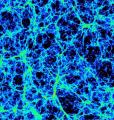
DMT-Nexus member
Posts: 230 Joined: 02-Feb-2019 Last visit: 20-Jan-2021
|
Hi Schmexus, welcome to the Nexus. (That sounds really great  ) You mean the integration of insight won in psychedelic experiences, right? EDIT: I removed my answer, because it refers to psychological aspects, rather than neurological ones. But instead: I believe there can only be breadcrumbs of neurological info on this issue at this point. I'm no expert, but in my eyes this is a question that entails the whole mental spectrum, and our info at this point of the relation between neurology and psychology is very limited.
|
|
|
|
|

DMT-Nexus member
Posts: 146 Joined: 18-Jun-2019 Last visit: 01-Sep-2019
|
There has been quite a bit of research on the topic. On Gaia.com there is a series called 'Psychedelia' which has an episode that talks about integration at length, both neurologically and psychologically. From my understanding, new neural pathways are promoted during altered states of consciousness with psychedelic usage. The key is intention before and the integration after an experience. Our ancestors figured out a lot of this stuff long before science is proving it now, which I find very remarkable. I know a little bit about this topic myself. Below is a couple links that I think you may find interesting. https://beckleyfoundatio...omote-neural-plasticity/https://www.neurologytim...mproving-neuroplasticityhttps://maps.org/news/me...09-pbs-hitting-the-brain’s-reset-button There is a plethora of information about this topic out there on the Web. Good luck in your research! “Silence is a source of Great Strength.” ~Lao Tzu
|
|
|

Dreamoar

Posts: 4711 Joined: 10-Sep-2009 Last visit: 02-Oct-2025 Location: Rocky mountain high
|
This is really the bleeding edge of where the research is at now. We've only barely begun scratching the surface in the last decade with the fMRI and metabolic data. Correct me if I'm wrong here, but I don't think we have much data on the short-term, let along long term, neural correlations of psychedelic use. Though I think this raises a wonderful question! Namely, what integration techniques can we employ to gain the most neurological benefit from our use of these compounds? Based on the fMRI data, it looks like WarpedDimension is spot on. Under the influence, the blood is flowing through thousands of new pathways not present in pre-dose imaging creating the image of a hyperconnected brain. This seem to correlate pretty cleanly with the effects: enhanced sensory perception, synesthesia, increased ability to learn, think creatively, and access memories. We also see the increased BDNF correlated with neural growth and repair. We know that reinforcement is key to creating new neural pathways. It takes 10,000 repetitions to master something. So the process of integration at the neural level, developing and maintaining the pathways created by psychedelics, very much seems to match the process of integration at the psychological level. Apply the information. So things like revisiting your trip in meditation, drawing, painting, or writing it out, any method of applying the information, ideas, or skills you learned during the experience will all work to reinforce those new connections and pathways. During and post-psychedelia is an excellent time to start creating new habits and routines and concurrently step away from those old ingrained patterns of thought and behavior. Of course we've still got a long way to go on the research side to conclusively demonstrate all this. Hopefully we'll start seeing more studies following up the neural correlates long-term and get some idea for what kind of physical changes are happening in the brain.
|
|
|

DMT-Nexus member
Posts: 975 Joined: 24-Jan-2015 Last visit: 17-Aug-2025
|
dreamer042 wrote:
We know that reinforcement is key to creating new neural pathways. It takes 10,000 repetitions to master something. So the process of integration at the neural level, developing and maintaining the pathways created by psychedelics, very much seems to match the process of integration at the psychological level. Apply the information.
So things like revisiting your trip in meditation, drawing, painting, or writing it out, any method of applying the information, ideas, or skills you learned during the experience will all work to reinforce those new connections and pathways. During and post-psychedelia is an excellent time to start creating new habits and routines and concurrently step away from those old ingrained patterns of thought and behavior.
Of course we've still got a long way to go on the research side to conclusively demonstrate all this. Hopefully we'll start seeing more studies following up the neural correlates long-term and get some idea for what kind of physical changes are happening in the brain.
That's nicely said, thankyou  I'd also like to direct your attention to the question of revisiting negative experiences with this same regard. Clearly psychological suppression always seems to end in further issues like that of but not limited to: derealisation, detachment, anxiety, panick attacks (most predominantly seen in many trauma victims too, not just negative psychedelic experiences). I look forward to someone bringing some neuroscientific literature in to this.
|
|
|

DMT-Nexus member
Posts: 128 Joined: 03-Jun-2017 Last visit: 14-Jun-2022 Location: European Union
|
dreamer042 wrote:
Based on the fMRI data, it looks like WarpedDimension is spot on. Under the influence, the blood is flowing through thousands of new pathways not present in pre-dose imaging creating the image of a hyperconnected brain. This seem to correlate pretty cleanly with the effects: enhanced sensory perception, synesthesia, increased ability to learn, think creatively, and access memories. We also see the increased BDNF correlated with neural growth and repair.
Awesome dreamer042 I always felt like synesthesia and the sense of the passage of time could be related. Do you have any theories about this? Edit (19.10.2020): Maybe not directly related, but in a recent paper, with contributions also from Robin Carhart-Harris, predictive coding is discussed. The first reference to predictive coding is to the paper: Friston, K. J. Waves of prediction. PLoS Biol. 17, (2019). I haven't looked deep into this predictive coding, but someone might comment that it could be a discussion about very small networks who do this predictive coding, and has less to do with 'predicting the future' or 'anticipation' than it might sound. When integrating or at the end of a journey, I sometimes have prediction-like visions which involve sensory sensations like touch and different limbs and body parts. It is usually strongly connected to one of my focuses during the last experience, and they each have their own triggers. These are usually healthy and it feels like the reason I'm having predictive visions is to avoid unhealthy behavior for the future, but sometimes it can be reprocessing past repressed trauma.
|
|
|

DMT-Nexus member
Posts: 1111 Joined: 18-Feb-2017 Last visit: 12-Jul-2024
|
For me, the most apparent (and attractive) aspect of the psychedelic experience (and I mean ayahuasca here more than anything else) is what I would call the creative intellectual process.
I connect distant ideas that otherwise seem unconnected. So in a way it makes me more intelligent, but in a creative rather than focused way.
And it's not just thoughts; playing guitar, for example, can be part of it.
And I believe some of this effect carries over to everyday life, because "neurons that fire together, wire together."
The day(s) after I'm very much in the mood and capacity to continue engaging in this process, even though the direct influence of the medicine is over. And so I do. It's my favorite activity anyway.
|
|
|

I rather root my values in my own hallucinations than in society´s neurotic illusions..
Posts: 681 Joined: 08-Jul-2017 Last visit: 08-Jul-2020 Location: Barcelona
|
I watch DuckTales and eat pancakes as integration!  "Too cute to live, too cozy to die" - Eaglepath
|
|
|
DMT-Nexus member
Posts: 81 Joined: 21-Jun-2015 Last visit: 06-Feb-2024
|
|